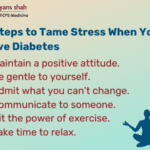VIRAL FEVER TREATMENT

A fever is a temporary increase in your body temperature, often due to an illness. Having a fever is a sign that something out of the ordinary is going on in your body. For an adult, a fever may be uncomfortable, but usually isn’t a cause for concern unless it reaches 103 F (39.4 C) or higher. For infants and toddlers, a slightly elevated temperature may indicate a serious infection.
Fevers generally go away within a few days. A number of over-the-counter medications lower a fever, but sometimes it’s better left untreated. Fever seems to play a key role in helping your body fight off a number of infections.
Symptoms :
You have a fever when your temperature rises above its normal range. What’s normal for you may be a little higher or lower than the average normal temperature of 98.6 F (37 C). Depending on what’s causing your fever, additional fever signs and symptoms may include:
Sweating
Chills and shivering
Headache
Muscle aches
Loss of appetite
Irritability
Dehydration
General weakness
Prevention :
You may be able to prevent fevers by reducing exposure to infectious diseases. Here are some tips that can help:
Wash your hands often and teach your children to do the same, especially before eating, after using the toilet, after spending time in a crowd or around someone who’s sick, after petting animals, and during travel on public transportation.
Show your children how to wash their hands thoroughly, covering both the front and back of each hand with soap and rinsing completely under running water.
Carry hand sanitizer with you for times when you don’t have access to soap and water.
Try to avoid touching your nose, mouth, or eyes, as these are the main ways that viruses and bacteria can enter your body and cause infection.
All Treatment
Opening Hours
| Mon – Sat | 06:00 PM - 08:30 PM |
| Sunday | 10.00 am - 06.00 pm |




